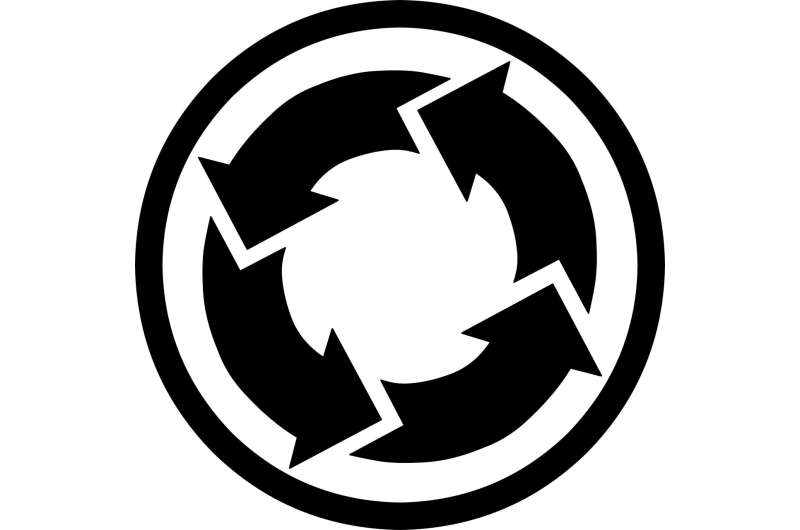Credit: Pixabay/CC0 Public Domain
By 2050, the Netherlands should have a circular economy. However, the new Integral Circular Economy Report by the Netherlands Environmental Assessment Agency (PBL) shows that there is still a long way to go. For the report, the Institute of Environmental Sciences Leiden (CML) mapped how many raw materials we can reuse from old infrastructure and existing buildings.
"The good news is that the Dutch urban mine is very substantial," says environmental scientist Janneke van Oorschot. "The bad news is that we cannot yet exploit this mine well enough."
Together with her colleagues at the CML, she mapped the resources supply for the circular economy. "Over the past few years, we have been working to get as complete a picture as possible of the number of materials in our society, such as in buildings, transport, infrastructure, the energy system and electronics. We have now completed that task." The researchers concluded that the Dutch stock is considerable: about 7.81 billion tons of raw materials. Van Oorschot: "And many of those raw materials are potentially interesting to use."
How many raw materials can we extract from the urban mine?
Based on this inventory, the researchers were able to calculate how many raw materials will be released from the urban mine in the future. "We did calculations for the electricity system, the heating system and buildings," Van Oorschot explains.
"The energy transition results in high demand for new products and thus materials, but at the same time, many materials will also become available from the old energy system. We can reuse those in turn. Buildings have a longer lifespan, and we build more than we demolish. So a lot fewer raw materials are released here, and that could complicate closing the material cycle until at least 2050."
Little progress in realizing a circular economy
In the report, the PBL notes little progress towards achieving a fully circular economy by 2050 and, in addition, halving raw material use by 2030. "The use of most raw materials has not decreased," the report states. "Three-quarters of raw materials have to be imported and the quantities of incinerated and dumped waste have increased. Supply risks of critical raw materials have also increased for our economy."
In addition, the PBL saw more plastic packaging, and a decrease in the useful lives of furniture and garments. "A worrying trend with a lot of environmental impact."
Focus more on high-quality recycling of raw materials
Compared to the rest of Europe, the Netherlands is well ahead in terms of recycling. We separate 78% of our waste and landfill relatively little. However, the report stresses that this mainly involves low-grade recycling.
Professor of Sustainable resource use Ester van der Voet explains, "The Netherlands uses most of its construction and demolition waste as filler material for roads. In the statistics, this counts as recycling, but it is in fact downcycling, a glorified form of dumping. We could recycle this waste much more high-value. For example, old concrete could serve perfectly well as a raw material for new concrete, thus reducing the extraction of raw materials from the environment."
More coercion needed to achieve targets
The report praises the government's ambitious goals, but for the moment sees a mismatch between the goals and the initiated policy. To make circularity the new normal, PBL revisits the recommendation from the previous report: more 'pressure and coercion' from the government. "For example, a mandatory share of reused material in products and an input tax on the use of fossil resources for plastics. This could create a serious market for circular products. Many circular projects are currently small-scale and do not easily become viable."
Professor of Industrial Ecology Arnold Tukker also points to the government for improvement. "Without a policy, not much will come of circular targets," he says in an interview with the NRC. An important part of the solution, he says, also lies in product design. "The ecological footprint of products is largely determined during design. For recycling, it makes quite a difference whether a product contains 18 different types of plastic or two. A piece of electronics is easier to repair if the parts are connected with a click connection instead of glue."
Van Oorschot says, "If we want to meet the targets within the set timeframe, we need to start making plans now to exploit the urban mine. There are therefore huge opportunities for the Netherlands to lead the way in this innovative field."
More information: Report (in Dutch): www.pbl.nl/publicaties/integra … omie-rapportage-2023
Provided by Leiden University
























